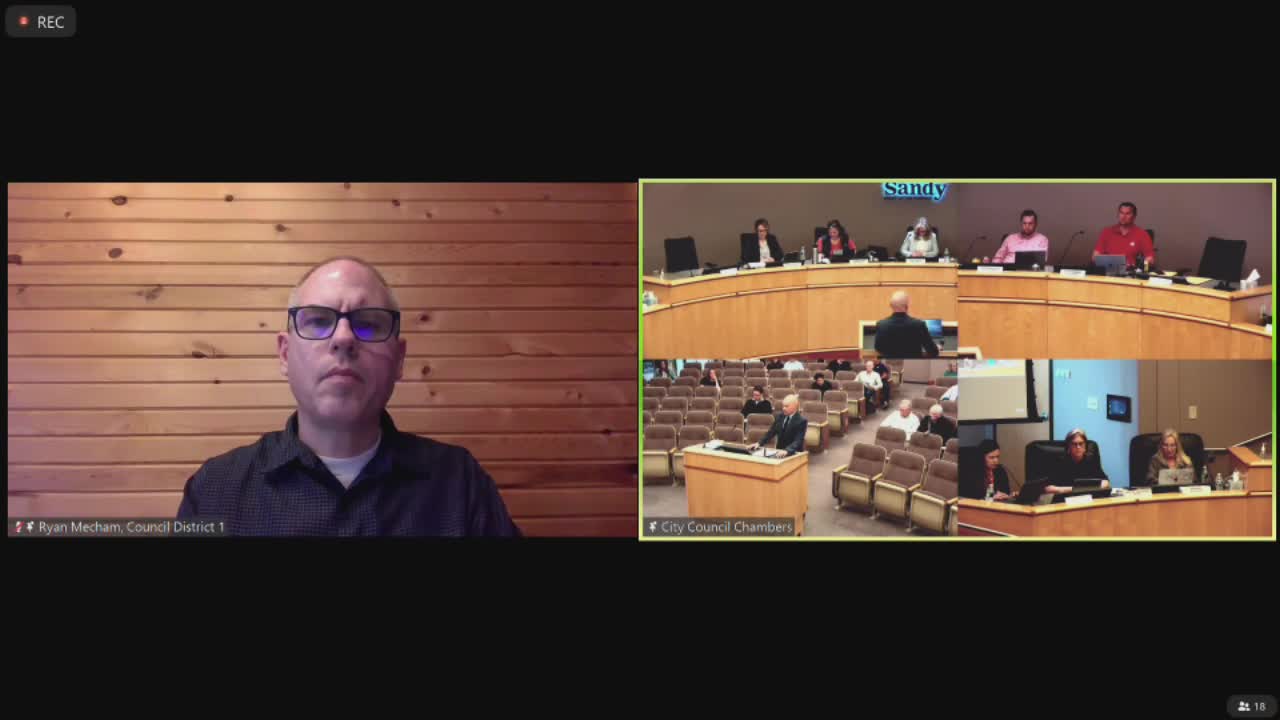City secures funding to jumpstart stalled housing project
April 16, 2024 | Sandy City Council, Sandy, Salt Lake County, Utah

This article was created by AI summarizing key points discussed. AI makes mistakes, so for full details and context, please refer to the video of the full meeting. Please report any errors so we can fix them. Report an error »

In a recent government meeting, significant discussions centered around the development of the Red Sky project, spearheaded by developer McKay Christensen. The project, which has faced financial hurdles, is now poised for progress thanks to a combination of city support and a newly secured HUD loan.
The meeting highlighted the challenges that have plagued development in the area, particularly since the onset of COVID-19, which has led to increased inflation and rising construction costs. The Housing Transit Reinvestment Zone (HTRZ) was initially proposed in 2022 to address a financing gap of approximately $8 million for the Red Sky project. However, only partial approval was granted due to the project's small size and a lack of direct connection to the Frontrunner commuter rail station at that time.
City officials have since identified a capital facilities fund balance that could be utilized to help bridge the financing gap. This fund, which had been reserved for infrastructure needs, is now seen as a viable source to support the project, particularly as it includes a parking structure that aligns with HTRZ density requirements.
Christensen emphasized the current lending environment's difficulties, noting that conventional loans have become increasingly challenging to secure, with interest rates soaring. The HUD loan option has emerged as a crucial alternative, allowing the project to move forward despite these financial constraints.
The city administration is keen on revitalizing the Cairns district, with Mayor Kim prioritizing economic development. The partnership with Christensen is viewed as a pivotal step in bringing the Red Sky project to fruition, with the potential for construction to begin as early as September, contingent on the timely closing of the HUD loan.
The meeting concluded with a commitment to ensure that taxpayer money is protected and leveraged effectively, with safeguards in place to recover funds if the project does not proceed as planned. The anticipated economic benefits of the project, including increased property and sales tax revenues, were also discussed, highlighting the broader impact on the local economy.
The meeting highlighted the challenges that have plagued development in the area, particularly since the onset of COVID-19, which has led to increased inflation and rising construction costs. The Housing Transit Reinvestment Zone (HTRZ) was initially proposed in 2022 to address a financing gap of approximately $8 million for the Red Sky project. However, only partial approval was granted due to the project's small size and a lack of direct connection to the Frontrunner commuter rail station at that time.
City officials have since identified a capital facilities fund balance that could be utilized to help bridge the financing gap. This fund, which had been reserved for infrastructure needs, is now seen as a viable source to support the project, particularly as it includes a parking structure that aligns with HTRZ density requirements.
Christensen emphasized the current lending environment's difficulties, noting that conventional loans have become increasingly challenging to secure, with interest rates soaring. The HUD loan option has emerged as a crucial alternative, allowing the project to move forward despite these financial constraints.
The city administration is keen on revitalizing the Cairns district, with Mayor Kim prioritizing economic development. The partnership with Christensen is viewed as a pivotal step in bringing the Red Sky project to fruition, with the potential for construction to begin as early as September, contingent on the timely closing of the HUD loan.
The meeting concluded with a commitment to ensure that taxpayer money is protected and leveraged effectively, with safeguards in place to recover funds if the project does not proceed as planned. The anticipated economic benefits of the project, including increased property and sales tax revenues, were also discussed, highlighting the broader impact on the local economy.
View full meeting
This article is based on a recent meeting—watch the full video and explore the complete transcript for deeper insights into the discussion.
View full meeting

